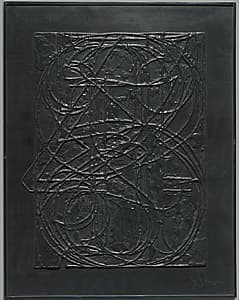- Overview
- Themes
- Works
-
Artists
- Albers Josef
- Andre Carl
- Arakawa
- Arneson Robert
- Baer Jo
- Baldessari John
- Bourgeois Louise
- Calder Alexander
- Castoro Rosemarie
- Close Chuck
- Cornell Joseph
- de Kooning Willem
- Flack Audrey
- Flavin Dan
- Frankenthaler Helen
- Gertsch Franz
- Gilhooly David
- Glarner Fritz
- Goldin Nan
- Gorky Arshile
- Guston Philip
- Held Al
- Hesse Eva
- Hofmann Hans
- Johns Jasper
- Judd Donald
- Kelly Ellsworth
- Kienholz Edward
- Krasner Lee
- Levine Marilyn
- Lewitt Sol
- Lichtenstein Roy
- Louis Morris
- Man Ray
- Mapplethorpe Robert
- Martin Agnes
- Morris Robert
- Motherwell Robert
- Nauman Bruce
- Newman Barnett
- Noland Kenneth
- Oldenburg Claes
- Ono Yoko
- Pollock Jackson
- Rauschenberg Robert
- Reinhardt Ad
- Resnick Milton
- Rothko Mark
- Ryman Robert
- Samaras Lucas
- Schueler Jon
- Shapiro Joel
- Sherman Cindy
- Smith David
- Smithson Robert
- Sonfist Alan
- Sonnier Keith
- Stackhouse Robert
- Stella Frank
- Still Clyfford
- Turrell James
- Warhol Andy
- Wilson Robert
- Tours
- Events
- Show all
- Precursors / New York School
- Colour-field Painting / Post-Painterly Abstraction
- Neo-Dada, Pop & Multiples
- Minimalism
- Conceptual
- Antiform: from Soft Sculpture to Land Art
- Figuration: Photorealism and Funk
- Light


Jasper Johns
Learn moreNumerals; from Lead relief series 1969
© Jasper Johns. VAGA/Copyright Agency Purchased 1973
More detail | PermalinkAt a time when the emotionally-charged paintings of Abstract Expressionism dominated the American avant-garde, Jasper Johns began to reframe everyday objects and symbols as valid subjects for fine art. Drawing influence from the traditions of Dada—particularly the absurdist humour and use of ready-made subject matter—his work was identified with the Neo-Dada movement and became a foundation for American Pop art.
Johns was interested in the idea of reproducibility and he constantly appropriated his own work, returning to motifs time and again across different media. The Lead relief series 1969–70 reconstructs some of his most iconic and recurrent motifs—the American flag, a lightbulb and numerals—in editions of embossed lead sheets.
Alice Desmond
At a time when the emotionally-charged paintings of Abstract Expressionism dominated the American avant-garde, Jasper Johns began to reframe everyday objects and symbols as valid subjects for fine art. Drawing influence from the traditions of Dada—particularly the absurdist humour and use of ready-made subject matter—his work was identified with the Neo-Dada movement and became a foundation for American Pop art. Johns was interested in the idea of reproducibility and he constantly appropriated his own work, returning to motifs time and again across different media. The Lead relief series 1969–70 reconstructs some of his most iconic and recurrent motifs—the American flag, a lightbulb and numerals—in editions of embossed lead sheets.

